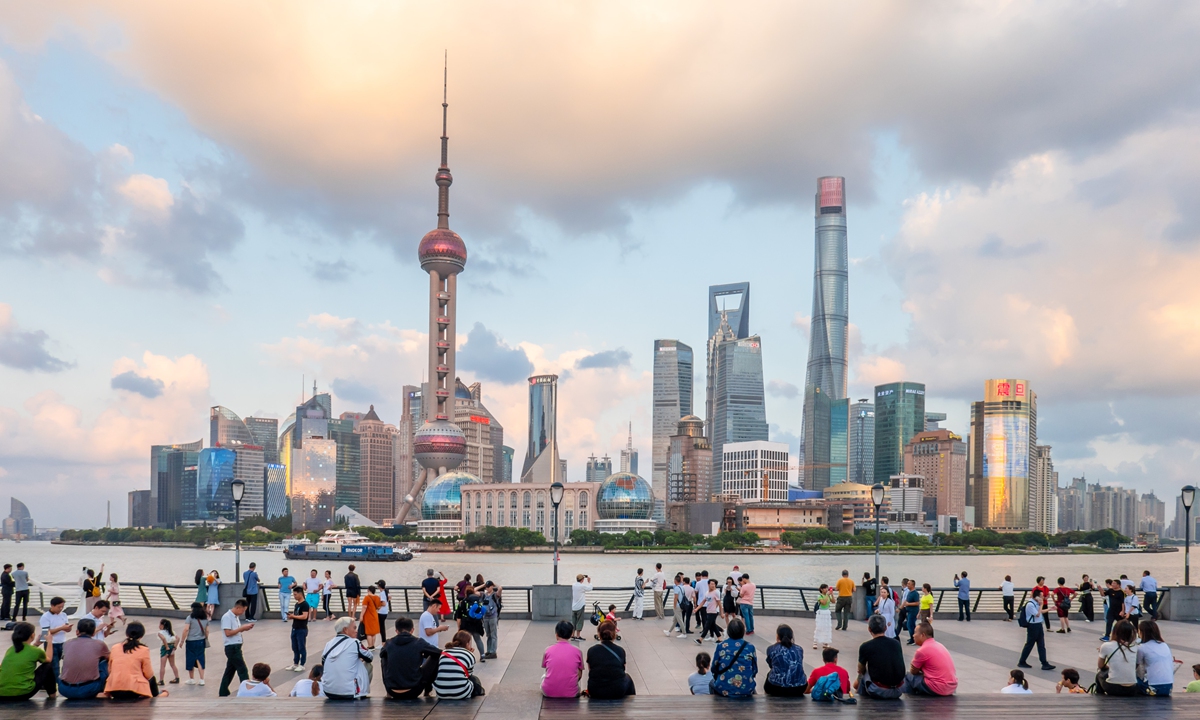
Pan Helin Photo: Courtesy of Pan Helin
The third plenary session of the 20th Communist Party of China (CPC) Central Committee held in Beijing from Monday to Thursday is set to focus on deepening reform and advancing Chinese modernization. The spotlight will be on the transition of China's economy toward high-quality development, which has garnered widespread attention.
In recent months, the US and some European countries have repeatedly hyped the so-called insufficient domestic demand in China. Considering the overcapacity rhetoric, the US and European countries seem to be trying to implant another "ideological imprint" onto the global community, that is, to promote the "China export threat" rhetoric. The "China export threat" rhetoric is essentially an evolved form of the "China threat" rhetoric, aimed at convincing global consumers that China's insufficient domestic demand has led to an overflow of products being exported. The new rhetoric tries to justify trade protectionism in the US and Europe and their imposition of tariffs on Chinese products to bolster their own manufacturing industries.
Subsequent developments have also confirmed this point. While stirring up public opinion, the US and the European countries have continuously tightened their tariff policies toward China. On May 14, Washington imposed import tariffs on $18 billion worth of Chinese exports to the US. On July 5, the EU imposed temporary tariffs on Chinese electric vehicles. From the rising rhetoric about China's "insufficient domestic demand" and "overcapacity" in April to the US imposing tariffs in May and the EU imposing tariffs in July, the protectionist mentality of the US and European countries is clear.
Is China really facing "insufficient domestic demand"? Data from the National Bureau of Statistics indicate that China's total retail sales in the first five months of this year increased by 4.1 percent year-on-year, while in May, the US core personal consumption expenditures price index increased only 2.6 percent. The figures suggest that the Chinese consumer market is actually more vibrant than the American one.
One of the main reasons why Chinese goods are highly competitive is precisely because of the declining competitiveness of European and American goods. In 2020, the US and the EU adopted "aggressive" monetary and fiscal policies to save their economies from collapse, leading to vicious inflation. For European and American manufacturing, high inflation has led to high labor and raw material costs, thus reducing the global competitiveness of European and American products. At the same time, China has steadily developed its manufacturing industry, effectively putting inflation under control, and to a large extent, Chinese exports to Europe and the US have helped stabilize prices in the US and Europe.
The purpose of the US and the EU promoting the rhetoric of "insufficient domestic demand" in China is likely to divert attention on internal conflict within the US and the EU and provide a "reason" for imposing tariffs on China. Their trade protectionism is taking Washington and Brussels down a completely wrong path.
As the import tariffs have increased government revenue in the US and the EU, tariffs have also become an important factor in the high inflation in the US and the EU, as tariffs will ultimately be paid by consumers. The "Inflation Reduction Act" signed into law by the Biden administration attempts to reduce inflation through expanding government spending. This goes against economic common sense: Government subsidies are economic stimulus policies, which will only increase US national debt and further raise inflation.
From China's perspective, there is indeed a need to increase domestic demand, but it cannot be done in a way which suits the needs of the US and EU.
China's new-energy vehicles (NEVs) have been a major target for increased trade protectionism measures from the US and the EU. However, in fact, it's the Chinese market that has the world's strongest demand for NEVs. China's penetration of NEV sales exceed 50 percent in April, much higher than levels seen in developed countries. China's domestic sales of NEVs rose about 30 percent year-on-year in June 2024. A string of recent data clearly shows that China does not have a problem of "insufficient domestic demand" in its NEV sector.
Therefore, if China rolls out measures to stimulate its domestic demand, it should consider issues from the perspective of the real situation of the Chinese economy, instead of the groundless hype about "insufficient domestic demand" and the false "overcapacity" narrative.
The US is seeking to suppress China's emerging industries such as lithium batteries, NEVs, and photovoltaic cells. In the past, the West exported high value-added goods to China and China exported low value-added goods. In recent times, China has attached great importance to independent innovation and moved up the value chain. This is hard to accept for Western countries, so they try to smear China with a false narrative of "insufficient domestic demand," aiming to contain China's emerging industries. We must be vigilant to this narrative. Therefore, whether it is industrial development or efforts to boost domestic consumer demand, China needs to consider issues from the perspective of its own economic characteristics and requirements.
The author is an economist, member of the expert committee for information and communication economics under the Ministry of Industry and Information Technology. bizopinion@globaltimes.com.cn





